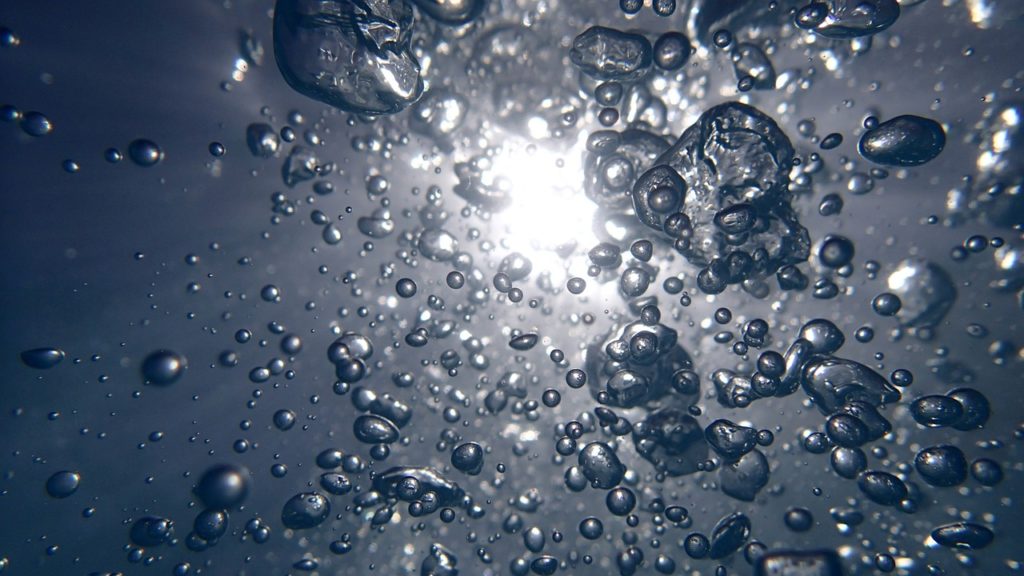Making fresh water from salt water, a process called desalination, has become vital in supplying water to the desert countries of the Middle East. Saudi Arabia, which creates 20 percent of the desalinated water in the world, recently announced plans to construct nine more desalination plants on the coast of the Red Sea. According to a tweet from Saudi Arabia’s environment minister Abdulrahman al-Fadhli, the plants will be built in fewer than 18 months and will be operational within a few years.
Access to fresh water is vital to development in the Middle East. However, some leaders have expressed concern about the negative effects that desalination can have on the environment. It’s also an expensive process, and desalination plants that run on fossil fuels can become polluters. As the region’s populations and economies grow, so does the demand for water, and leaders are looking to alternative technologies, conservation strategies, and water supplies to make sure region has an adequate supply of water.

Reforming Desalination
The Middle East processes about 70 percent of the world’s desalinated water. The desalination process concerns environmentalists because of the large carbon footprint and waste products it creates. Desalination plants typically use fossil fuels to evaporate the water and then condense it.
Creating fresh water leaves behind brine and chemicals that are returned to the sea, where they can harm underwater ecosystems. The most efficient desalination plants can make about 2 cubic meters of brine for every cubic meter of fresh water they produce. As a result, the waters of the Persian Gulf, Red Sea, and Mediterranean Sea are becoming saltier as the result of brine disposal.
Scientists expect salt levels in the Gulf and seas will only increase, which then requires more energy to desalinate it. Some experts have recommended diluting the water by dumping the bring farther offshore or mixing the brine with treated wastewater so it’s not as salty when it’s returned to the sea.
Several projects are in the works to implement more environmentally-friendly desalination processes. Some plants are switching to solar power, a logical move as the region is drenched in direct sunlight. Experts say that a solar-powered desalination plant could open in the Middle East as early as 2021.
Switching from fossil-fuel powered plants could have significant benefits for Middle Eastern economies. It’s much cheaper to use solar power, which could reduce the price of desalinated water. Additionally, using solar power would free up more oil for Middle Eastern countries to export.
Other leaders are pushing desalination plants to switch to reverse-osmosis desalination. This uses less energy by pushing salt water through a semi-permeable membrane. Researchers continue to develop improved technology for this process, including membranes that can work at low pressure and high temperatures as well as membranes that filter contaminants.
Economical Alternatives
It’s estimated that some Middle Eastern countries are 90 percent dependent on desalinated water. Some say it’s primarily because there’s no alternative for clean water. However, there are less expensive ways to generate potable water using unconventional water supplies.
Technologies that can treat wastewater, recharge groundwater, and capture rain and stormwater to resupply aquifers are not expensive. These processes could be especially beneficial in poorer countries and regions such as Libya, the West Bank, Gaza, and Yemen, where the primary water source is still groundwater.
The World Bank estimates that issues resulting from an inadequate water supply and ensuing sanitation problems in the Middle Eastern region cause about $21 billion annually in economic losses. These losses show up as increased need for health care and more time missed at work because employees are sick.

Conservation
Addressing the use of water rather than the supply may also help Middle Eastern countries manage their water shortages. Some strategies include installing low-flow faucets in bathrooms, showers, and kitchens and using low-flush toilets. More extreme measures, such as composting toilets, can have an even bigger impact on water conservation.
Individuals also can change how they use potable water outdoors. Landscaping irrigation is a large consumer of fresh water, and it can be reduced with a multi-step approach. Homeowners and property managers can employ a number of strategies, including reducing turf grass, mulching, and irrigating with recycled water.
Additionally, property owners and managers can landscape with native plants that need less water. They can also manage irrigation with weather-based irrigation controls, drip irrigation, and schedule irrigation. These measures can significantly decrease water use.
In the commercial arena, property managers can reduce freshwater use by using non-potable water, including gray water and rainwater, into systems for cooling towers, chillers washing machines, and dishwashers. When these devices are metered, it’s also easier to collect data and find leaks that can cripple water systems.
The condensation from electric power equipment can be collected and reused in building where it was created. This system involves catching condensation in a pan and seen it for flushing toilets, irrigation, and other on-site processes.

